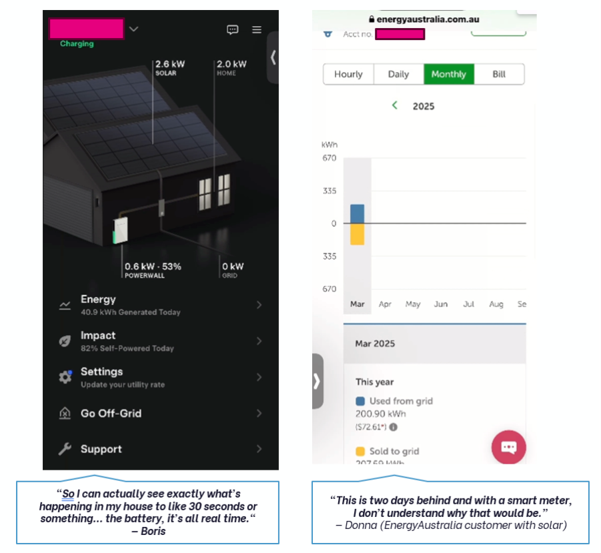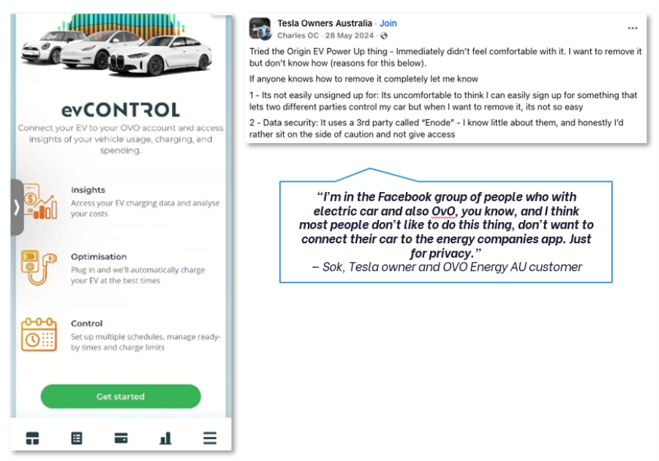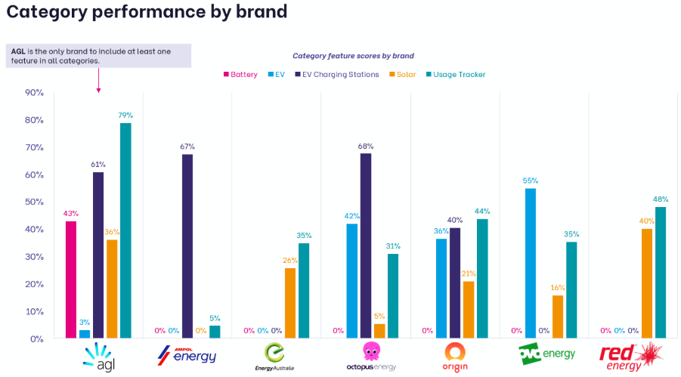The energy landscape is shifting fast. Consumers adopting electric vehicles (EVs), rooftop solar, and home batteries are not just early adopters anymore – they are increasingly mainstream, digitally savvy, and vocal about what they expect from their providers.
Global Reviews recently ran an in-depth study into the needs and behaviours of these customers, combining surveys of more than 400 energy users with discovery interviews across Australia and the UK. The findings highlight both opportunities and challenges for providers as they compete to meet rising expectations.
Real-time data is no longer optional
Across the board, customers expressed deep frustration with the 24-to-48-hour lag in most energy apps. For households balancing solar generation, battery storage, and EV charging, delayed information simply doesn’t cut it.


Participants wanted live visibility of solar generation, battery levels, and charging status. As one battery owner put it: “I can check the status of my battery from this app… it’s all real time.” That immediacy builds trust and empowers smarter decisions, from turning on appliances when solar is plentiful to shifting charging to cheaper off-peak times.
For providers, real-time insights are now a baseline expectation, not a “nice to have.”
Fragmented digital experiences are creating friction
One of the strongest pain points identified was the sheer number of apps customers are forced to juggle. Many reported using separate apps for solar monitoring, EV charging, batteries, and billing – often three or more to cover their household needs.
This fragmentation creates confusion, increases the risk of disengagement, and diminishes brand loyalty. Customers are clearly asking for a unified platform that consolidates all their energy ecosystem data in one place.
An opportunity exists for providers to become the “single pane of glass” – offering integration, optimisation tools, and personalisation that reduce complexity and keep customers engaged.
Demand is highest for actionable features
While informational tools like usage trackers or static solar dashboards remain important, it is the “active” features that customers rate most highly. EV charging stations (59.3 importance score) and battery management (59.2) topped the benchmark, outpacing passive features like solar tracking.

EV owners showed the strongest enthusiasm for advanced digital capabilities such as scheduling charging, monitoring real-time costs, and optimising for solar availability. Solar owners, by contrast, tended to rate digital features slightly lower, often due to lower visibility of benefits or confusion around system performance. Providers who focus on actionable, interactive features – especially in EV charging and battery management – will capture the most value.
Education and guidance are under-served
Not all customers feel like “experts” in their energy journey. Many solar owners admitted they don’t fully understand how their systems work, while newcomers to EVs are unsure of the impact on bills.
Customers are hungry for in-app guidance: plain-English explanations of kilowatts and tariffs, performance alerts, maintenance reminders, and recommendations for upgrades like adding a battery. These insights don’t just build confidence – they also position the provider as a trusted advisor. Without this educational layer, many users remain passive trackers, missing opportunities to optimise their energy use.
Regional and demographic differences matter
The research revealed striking differences in feature demand across states. Queensland led in appetite for solar and battery functionality, while New South Wales lagged in EV-related features. Victoria fell somewhere in between, particularly under-indexing for usage tracking.
Providers should tailor their offerings and marketing by region, rather than assuming a one-size-fits-all approach. Similarly, different product owners show different loyalty drivers:
- Solar owners prioritise price, clear bills, and service.
- EV owners value partner offers and robust mobile app experiences.
- Battery owners over-index on easy-to-use websites and social media engagement.
These nuances suggest that personalisation – both in product and in communication – is critical for retention.
Trust and privacy remain barriers
For all their appetite for data, many EV owners remain wary of linking their cars directly to an energy provider’s app. Concerns about remote control, data misuse, or loss of autonomy create reluctance.

Providers must design privacy-first experiences, with transparent permission settings and clear controls. Giving customers the ability to decide exactly what data is shared, and when, will go a long way toward easing these fears.
Public charging is still too complex
Home charging is only half the story. Public EV charging, participants told us, is riddled with inconsistent pricing, confusing holding fees, and patchy real-time availability.
The ideal solution? An integrated app that not only manages home charging but also helps plan trips with accurate charger availability, pricing, and payment options. With EV uptake rising, this is a space ripe for disruption.
A digital maturity gap persists
Despite progress, the sector remains far from meeting customer expectations. AGL leads the current digital maturity index with a 40% score, followed by Octopus UK (31%) and Origin (30%). Others, including EnergyAustralia and Red Energy, lag well behind.

The gap is a clear signal: while some providers are innovating, many are still offering only basic digital functionality. The spread underscores just how much opportunity exists for differentiation.
What it all means
Taken together, the study paints a picture of energy customers who are more digitally savvy, more demanding, and more willing to switch if providers don’t deliver.
They want:
- Real-time, actionable insights across EV, solar, and battery.
- Unified digital platforms that reduce app fragmentation.
- Smart features like EV charging schedules and battery optimisation.
- Clear education and guidance to build confidence and trust.
- Privacy and transparency in how their data is used.
- Better integration with public charging networks.
Providers who meet these expectations will not only improve customer satisfaction but also secure loyalty in a highly competitive market. Those who don’t risk being left behind as the energy transition accelerates.








